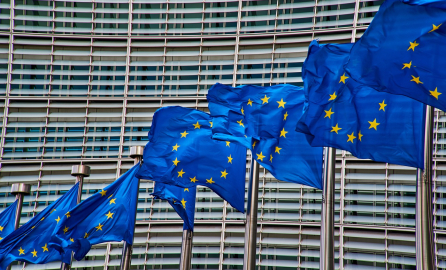For the past seven years, DG Enlargement and DG DEVCO have played host to the Institutional Building Days, gathering together users of the European Commission’s TAIEX, Twinning and SIGMA instruments. As well contributing towards knowledge exchange, these tools are key in promoting peer-to-peer learning and specialised capacity development.
Hundreds of people in Europe and in its neighbourhood are involved with the planning and implementation of the three Institution Building instruments of the EC: the TAIEX, Twinning and SIGMA. Very often these actors are from diverse backgrounds and locations and, according to Nicolo Gasparini, Project Manager at DG Enlargement, it is therefore crucial that every year they are gathered together to meet and exchange best practice. This year marked their seventh gathering.
"The Institutional Building Days helped us gather feedback from the ground, increase the coordination among the hundreds of actors in the enlargement and neighbourhood regions and to explore the Capacity Development potential of these tools,” he said recently in Brussels. The political and institutional reforms in the ENPI region and especially in the southern neighbourhood region make these tools more pertinent than ever.
DG Enlargement houses the Institution Building Unit that takes care of all candidates and potential candidates for accession to the EU. The Unit manages two different instruments: Twinning and TAIEX. So what are the main features of the Twinning and TAIEX, and their evolving aspects?
“TAIEX is a short term technical assistance instrument,” explained Paolo M Gozzi, an Official of the Institution Building Unit. “It mobilises experts for a short period of time. The three main kinds of activities are expert missions, study visits for the officials from the beneficiary countries to a Member States’ administration, and workshops. Everything is taken care from Brussels.”
“Twinning is much more complex as it is part of the yearly financial assistance that the EU provides to a country. Some discussions precede the decision to launch a Twinning project: it must also be EU legislation related, and it involves long -term planning of activities. All member states, on an equal footing, have the possibility to propose their solution to a need that has been identified by a beneficiary country. Member states are very keen to participate because the activities develop over a longer period, such as one to two years, and is based on presence of someone from the member state who provides assistance throughout the duration of the programme. This person becomes the Resident Twinning Advisor who organises the visits of other experts and a programme of activities, which help the beneficiary country reach mandatory results that are set at the beginning and must be met by the end of the project.”
“The way a Twinning project is organised also gives due responsibility to both sides. This involves a grant that the EU gives to one member state in order to implement the programme that he has submitted to the beneficiary country and the latter has accepted.”
Mr Gozzi identified peculiarities of these instruments that provide them with capacity development importance:
Peer-to-Peer learning methods: “These instruments put together officials from the public administration of member states and officials from the public administration of beneficiary countries,” he said. “There is a direct link between practitioners - people who do the same work, who can understand one another’s problems and who can help in implementing activities that have a direct connection to the implementation of the so-called EU acquis.”
Ownership: “The instruments have a high degree of ownership… In the case of TAIEX every operation is triggered by an individual application from the beneficiary administration that identifies its particular need. So they decide what kind of assistance they need, and they approach the Institution Building Unit to assist in finding experts who can meet those needs.”
In the case of Twinning, which is a more medium to long-term tool, the needs analysis is a joint operation between the beneficiary administration and the Delegation of the European Union, within the framework of the yearly programming of EU assistance. “However,” added Mr Gozzi, “the element of ownership is perhaps even bigger, as the word Twinning implies. A Twinning project requires the full involvement of both the receiving administration and the member state who mobilises its own officials to work with that administration.”
Engaging Public Civil Servants: Rather than employing specialised consultants, these tools are able to access and engage with public civil servants who bring their specific experience to the table. “In this sense the instruments are unique because they can mobilise what can otherwise not be mobilised - you cannot pay to buy the assistance of a civil servant, even by definition!” said Mr Gozzi. “In the framework of TAIEX, Twinning and SIGMA these experts can be mobilised to share their experience and know-how as civil service representatives of a member state.”
For more information, please visit the comprehensive websites for each of these tools: TAIEX, Twinning and SIGMA.
This video explaining TAIEX comes from its website:
Please watch a second video of Mr Gozzi explaining the main features of TAIEX, Twinning and SIGMA in the capacity4dev.eu Public Group on Capacity Development and Technical Cooperation Reform.
This collaborative piece was drafted with input from Paolo M Gozzi, Nicolo Gasparini, Laura Mascagna, Christophe Ingels, and Lucia Santuccione with support from the capacity4dev.eu Coordination Team.

Log in with your EU Login account to post or comment on the platform.